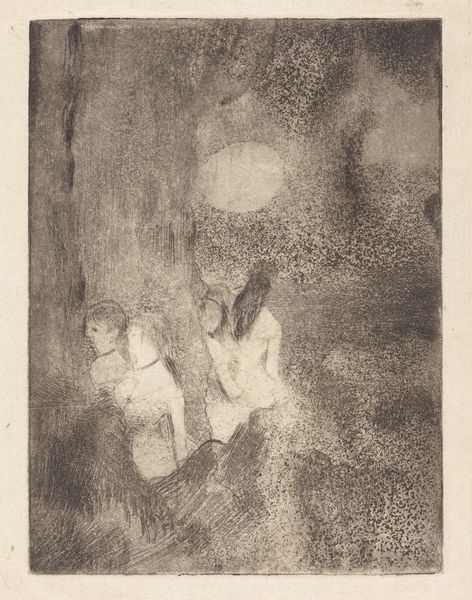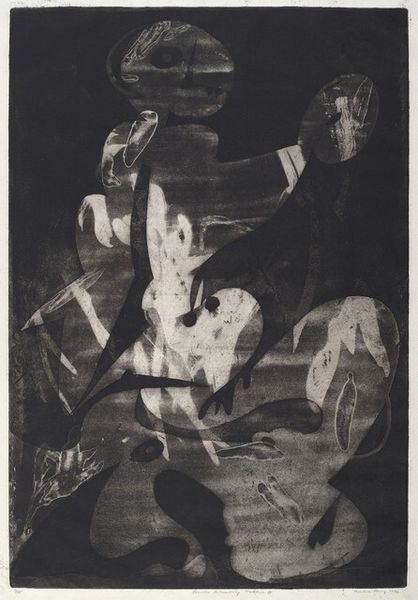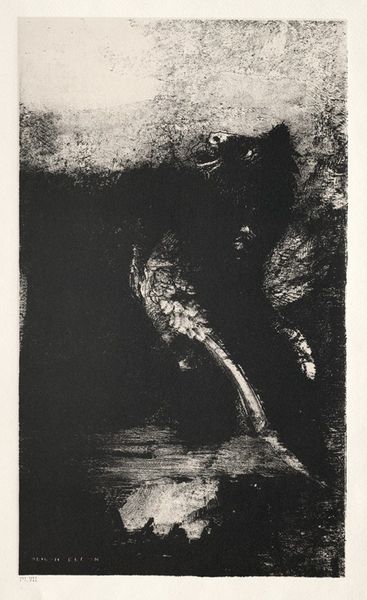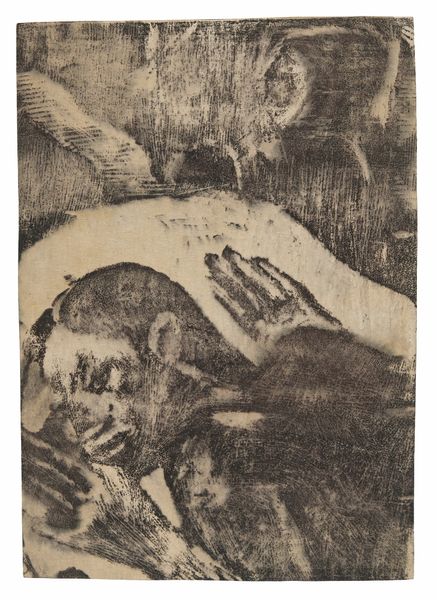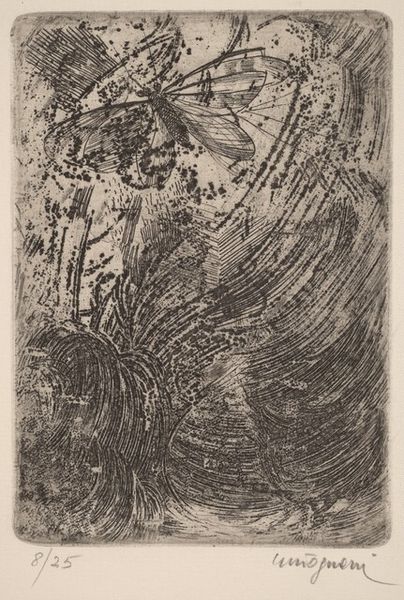
The Ass Laden with Sponges and the Ass Laden with Salt 1927 - 1930
0:00
0:00
print, etching
#
narrative-art
# print
#
etching
#
landscape
#
figuration
#
expressionism
#
surrealism
Copyright: National Gallery of Art: CC0 1.0
Editor: So, this etching by Marc Chagall, “The Ass Laden with Sponges and the Ass Laden with Salt," from between 1927 and 1930… it’s pretty striking. The figures almost seem to emerge from the darkness. What’s your take on it? Curator: Let’s think about what it meant to produce prints during that time. Etching, particularly, involves a laborious process—the physical act of scratching into a metal plate. It allows for reproducible images, challenging the aura of the unique artwork. This piece speaks volumes about the consumption and circulation of images in the early 20th century. Consider the materiality of the ink, the paper... these are not incidental choices. Editor: That’s fascinating. I hadn't considered the impact of printmaking itself. Does the choice of a biblical narrative have any relation to mass production or materiality? Curator: Absolutely. Chagall's use of a biblical narrative is intriguing when we view it through the lens of materiality and production. Biblical stories, at the time, were often reproduced as mass media, as popular imagery in books. The narrative, repackaged and recontextualized through inexpensive mediums, serves the economy of devotion and visual consumption. Editor: I see! So the art wasn’t just *of* the people because of the narrative but also because of the materials used and the possibility of mass consumption. Curator: Precisely! It blurs the line between "high" art and popular culture, prompting a re-evaluation of artistic hierarchies based on material and process. This changes how we perceive "originality". The commodification of the spiritual! Editor: This has changed my perspective on the entire piece! I came in thinking about expressionism but now I can’t stop thinking about the economics of materials. Curator: Indeed, by considering the work’s physical making and distribution, we gain insights into art's role in shaping social, economic, and political dynamics. A fascinating conversation for sure!
Comments
No comments
Be the first to comment and join the conversation on the ultimate creative platform.


